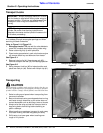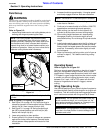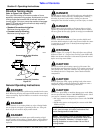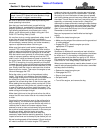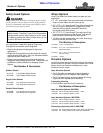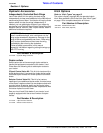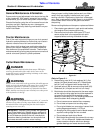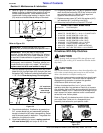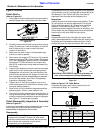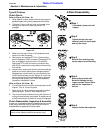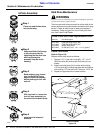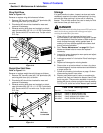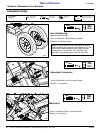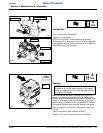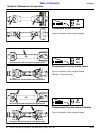
26
Section 5: Maintenance & Lubrication
RC5014 (540 RPM) and RCM5014 (1000 RPM) Rotary Cutters 330-117M 2/02/08
Land Pride
Table of Contents
Type A Clutches
Clutch Run-In
Refer to Figure 5-5:
1. Using a pencil or other marker, scribe a line across the
exposed edges of the clutch plates and friction disks.
Type A Clutch Run-In
Figure 5-5
2. Carefully loosen each of the 8 spring retainer nuts by
exactly 2 revolutions. It will be necessary to hold hex
end of retainer bolt in order to count the exact
number of revolutions.
3. Make sure the area is clear of all bystanders and
machine is safe to operate.
4. Start tractor and engage PTO drive for 2-3 seconds
to permit slippage of the clutch surfaces. Disengage
PTO, then re-engage a second time for 2-3 seconds.
Disengage PTO, shut off tractor and remove key.
Wait for all components to stop before dismounting
from tractor.
5. Inspect clutch and ensure that the scribed markings
made on the clutch plates have changed position.
Slippage has not occurred if any two marks on the
friction disk and plate are still aligned. A clutch that
has not slipped must be disassembled to separate
the friction disk plates. See “Clutch Disassembly,
Inspection & Assembly” below.
6. Tighten each of the 8 spring retainer nuts on the
clutch housing exactly 2 revolutions to restore clutch
to original setting pressure.
7. Allow clutch to cool to ambient temperature before
operating again. Clutch is now ready for use.
8. The clutch should be checked during the first hour of
cutting and periodically each week. An additional set
of scribe marks can be added to check for slippage.
See Figure 5-7 to adjust spring length.
Clutch Disassembly, Inspection & Assembly
Refer to Figure 5-7:
If clutch run-in procedure above indicated that one or more
friction disks did not slip, then the clutch must be
disassembled to separate the friction disks.
Disassembly
13693
IMPORTANT: Not all Type A clutch components are
arranged as illustrated in Figure 5-6. Also some
have more components than others. Be sure to keep
track of order and orientation of your clutch
components during disassembly.
Disassembly of clutch is simply a matter of first removing
spring retainer nuts (#1), springs (#2) and bolts (#3) from
the assembly. Each friction disk (#4) must then be
separated from the metal surface adjacent to it.
Inspection
Inspect all parts for excessive wear and condition. Clean
all parts that do not require replacement.The original
friction disk thickness is 1/8" (3.2mm) and should be
replaced if thickness falls below 3/64" (1.1mm). If
clutches have been slipped to the point of “smoking”, the
friction disks may be damaged and should be replaced.
Heat build-up may also affect the yoke joints.
Assembly
Reassemble each friction disk (#4) next to the metal
plate it was separated from. Install bolts (#3) through the
end plates and intermediate plates as shown. Place
springs (#2) over the bolts and secure with nuts (#1).
Type A Clutch Disassembly
Figure 5-6
Refer to Figure 5-7 & Table Below:
Progressively tighten each spring retainer bolt until
correct spring height “A” is reached.
Clutch Adjustment
Figure 5-7
Driveline
No.
PTO
Speed
Cat.
No.
Driveline
Location
A"
Spring Height
826-494C 540/1000 5 Wing 1.32"
826-495C 540/1000 5 Center 1.32"
14714
IMPORTANT: Keep track of order and orientation of
your clutch components during disassembly
24600



